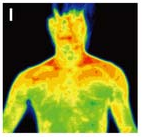Many years ago, a wonderful friend gave me a used copy of Viktoras Kulvinskas planetary healers manual. At the time, I was a volunteer at a religious retreat and had plenty of time in the evenings to read. I’m sure I read that book multiple times.
About a year ago, I ordered up another copy and read it, again, cover to cover. By today’s standards, I have to say that book cracks me up. It’s, oh … so groovy man, you gotta just feel the vibes. Lol.
Yet, I have to hand it to Viktoras Kulvinskas, he’s still selling copies and I’m sure that book was divinely inspired. The best part about that book was that he approached his topics with just enough science backing to make you believe that the subjects just might hold a little truth.
On topic that he covers, but doesn’t cover very well is the idea of Breatharianism. The idea that someone could live on nothing but the life force in the air. I’ve always thought it curious and magical at the same time.
When I brought this idea up to my older daughter, she immediately stated “they cheat. No one can live on air.” My response was along the lines, ‘are you sure’?
When it comes down to measuring a lot of things in life, we can say with confidence that, say, when you let go of an apple, it will fall to the ground. Yet, people like to generalize things and so they make absolute statements like ‘if you let go of it, it will fall to the ground.’ But, is that really true in the absolute sense?
The absolute measuring may not apply to the human body. We may ‘think’ we understand how the human body works, but what I’m discovering is that we (as scientists) have discovered how a bunch of the little processes seem to behave within the body and some classic cause and effect situations. But not the full end-to-end story.
In the simple case, the generality is: Sugar gives the body energy. This statement then gets turned upside down so as to state: the energy that the body needs is acquired from sugar. But is that really the truth?
Let’s come back around to that concept of breatharianism. That idea was a key trigger inspiring me to write the post on Prana. Might there really be energy in the air? Might there be enough to sustain someone?
Or, is there another source?
Part of the reason for revisiting this topic is because I came across an article on MSN that talked about ‘the Starving yogi’. He claims to have not eaten since he was 15 (or twelve depending on the source). To me, the MSN article has sensationalized the science behind the 10 (or 15 depending on which news source you read) day ordeal in order to get readership up.
My first reaction to the article was – He’s not starving! If he was hungry he would have eaten something!
Then, if you visit this other article, it looks like one of the scientists is quoted as saying:
If Jani does not derive energy from food and water, he must be doing that from energy sources around him, sunlight being one,” said Shah.
Deriving energy from water? That is new to me. I’ll overlook that, for everyone can be mis-quoted.
Looking a little deeper, it turns out that there is a video clip on YouTube titled pranasynthesis that is absolutely worth the 4.25 minutes.
What’s unfortunate about this video is the female scientist that’s interjected just about 3 minutes in. And, of course, the editing of her ‘impossible’ statements into the legitimate interview that they are doing with the scientist (Shah) applies someone else’s agenda to the video clip, but we can watch with an open mind.
The narrator also mentions that Shah has a theory about how this yogi survives – he’s feeding off the sun – solar gazing. He goes into details about what must be done. It’s pretty clear that Shah is open minded about the process. Yet, the female is edited in again with a series of misleading “impossible” statements that are really… irrelevant to the observation. Of course people don’t do photosynthesis – plants do that to store energy. What if he’s using the energy directly?
And, by the way, she states that plants generate their own energy supply via photosynthesis (about 3:40 seconds in). That, in my understanding, it technically incorrect. Plants receive energy from the sun and store it in sugars. Plants do not generate energy, they use it and store it.
Now, what they seem to skip over is the Yogi explaining how hs is able to manage (just over 4 minutes into the video) to stay energized. The narrator says, the sun transmits energy through a hole in the holly man’s throat producing a sticky solid lump that he can digest. Then, he states that it refuels the chakra energy points in his body. These words completely contradict the female talking about photosynthesis, for the yogi knows he is not recieving his energy through photosynthesis.
Ultimately, this is interesting. The scientists talk about photosynthesis and sun gazing, but the yogi talks about chakras and actually touches his head.
Seeing this video, I have to wonder if the scientists are even listening to the yogi. He seems to be telling them where the energy comes from, but they seem to only hear that they can understand.
I would love to find more videos like this so that I could learn a little bit more about ‘energy’ in the human body. This yogi seems to point out that there are energy sources other than food that are quite enough to sustain life. And, I have to admit that he looks pretty healthy.

